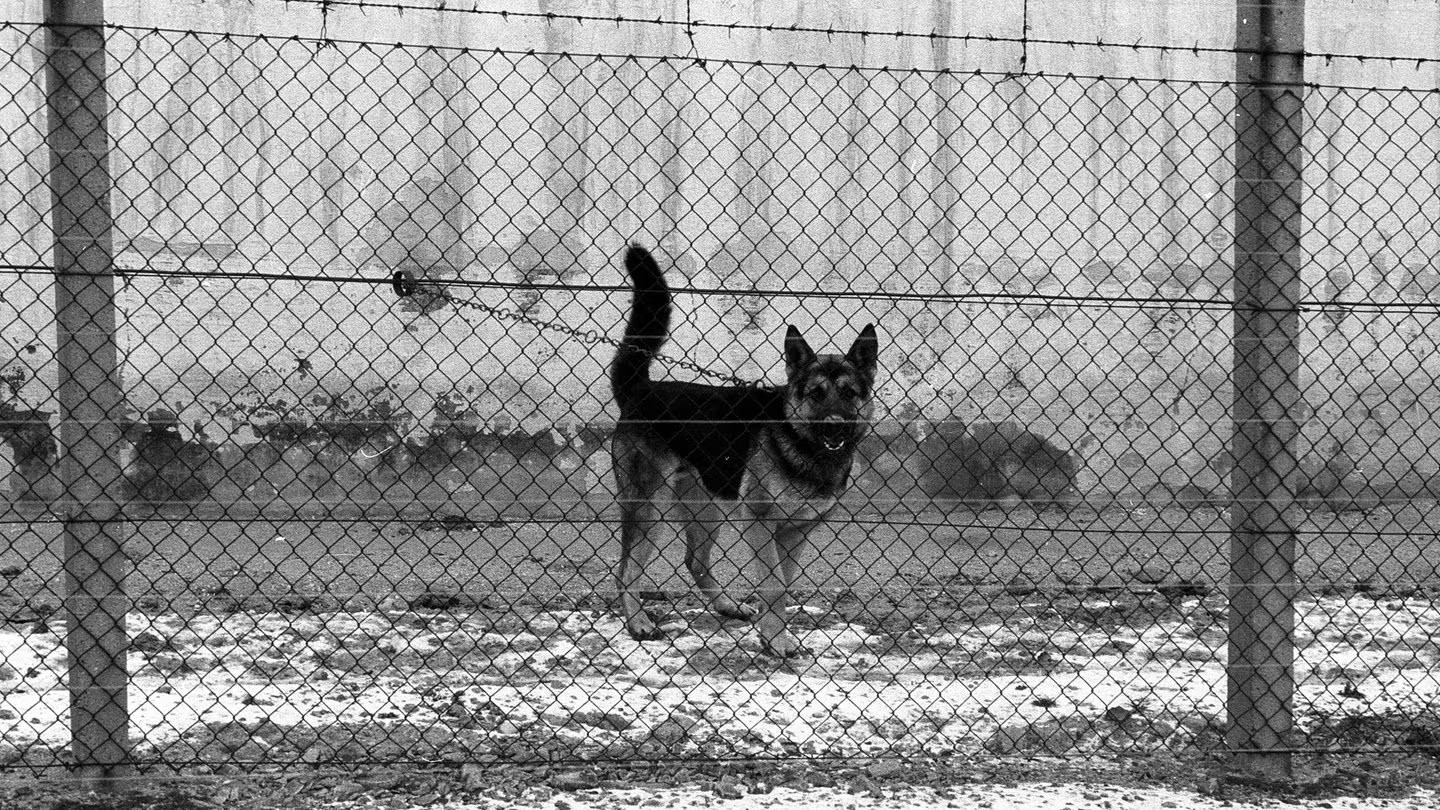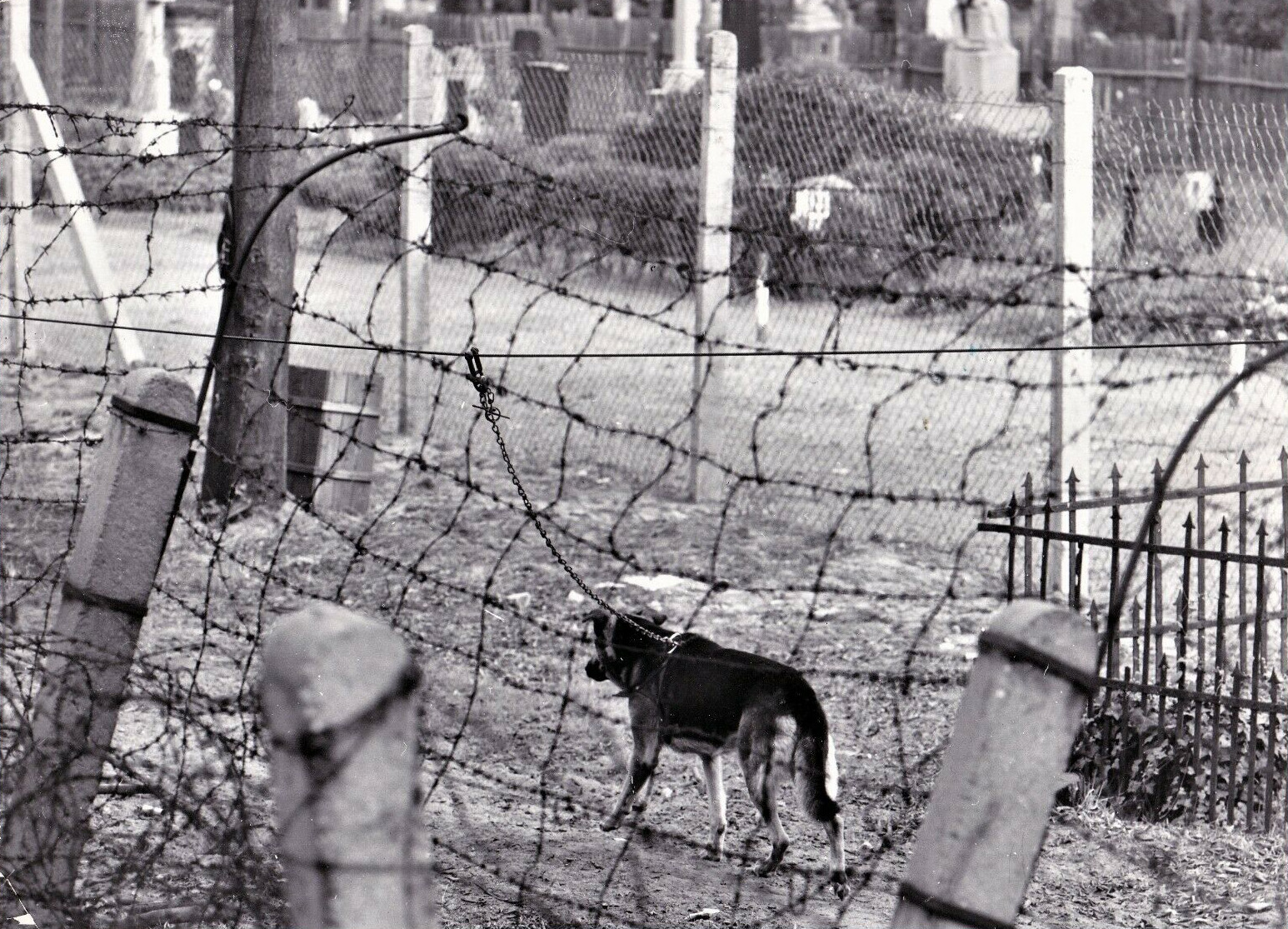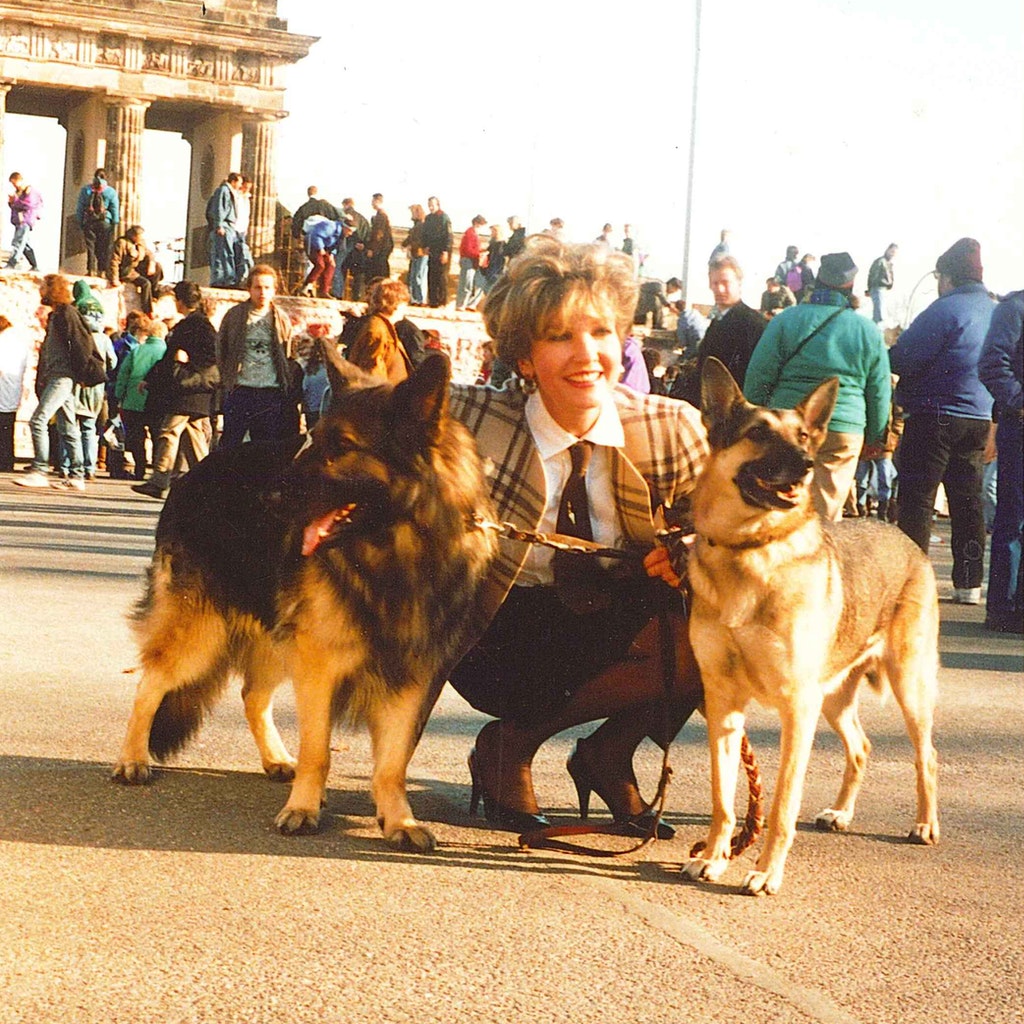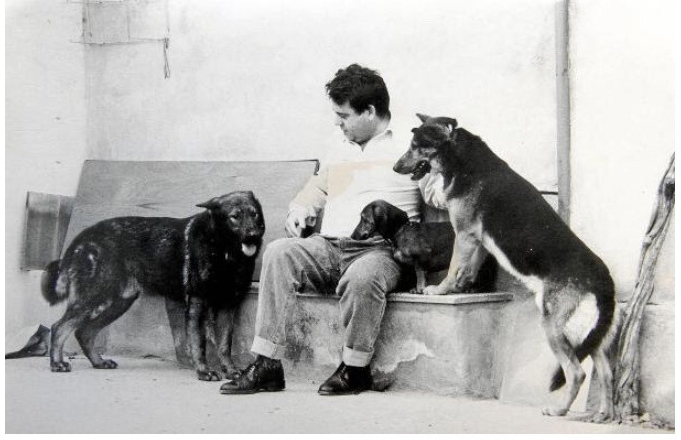The border service ended in 1989, but what became of the guard dogs?
In 1961, what would become the symbol of the Cold War was erected in the heart of Berlin: the Berlin Wall. In what was called the "death strip," a regulated area separating the former GDR from free West Berlin, lined with watchtowers and barbed-wire fences, between 6,000 and 10,000 dogs, mostly German Shepherds, were used to closely monitor this border from 1961 to 1989.
Each dog was attached to a 5-meter-long chain that allowed them to move in all directions. This chain was connected to a 100-meter-long cable, permitting the dog only to run parallel to the wall.
Sold by breeders or private owners, these dogs—often portrayed as fearsome killers—were in reality mere props deprived of affection, most without any training. Their mere presence, reinforced by a frightening reputation, was enough to deter anyone from attempting to cross the wall, while their barking immediately alerted the border guards—“harmless incarnations of their own myth,” as journalist Peter Schneider put it.
Accounts describe dogs kept in terrible conditions, isolated and neglected, without shelter from freezing cold or blazing sun, often on the verge of starvation to maintain a certain level of aggression, dogs driven to near madness, barking incessantly, developing what was then called the "wall syndrome."
Other accounts claim that the dogs were not mistreated but rather well-fed and properly cared for. Where does the truth lie? Probably somewhere in between, depending on the guard team, which rotated regularly, and on the dogs’ ability to withstand such stress.
For the NVA, the army of the German Democratic Republic, all these dogs became useless overnight when the borders opened during the winter of 1989/90.
The Berlin animal protection association then intervened to rescue as many dogs as possible and have them adopted by West Germans. This rescue of the Wall dogs became one of the first major collaborations between East and West: the German Animal Protection Association, the Berlin Animal Protection Association, and the East Berlin animal shelter worked closely with representatives of the NVA. With the media covering the adoption campaign, the fate of these dogs also attracted attention beyond German borders.
Of the 6,000 dogs in service, 1,500 were reportedly placed with East German families, 2,500 placed for adoption in West German animal shelters, but 2,000 were reportedly euthanized by the former GDR.
Even today, the exact number of Wall dogs that were adopted remains unknown. Among the lucky ones, two German Shepherds, Juro and Betty, saw their lives change dramatically after being adopted by a family on the island of Mallorca, going from the hell of the gray border to Spanish paradise.


Dog of the Wall connected to its 100-meter metal cable, 1967.

Carolin Reiber, German television star, poses with two Wall dogs in front of the Brandenburg Gate, 1990.

Juro (left) in his new life in Mallorca, 1990.